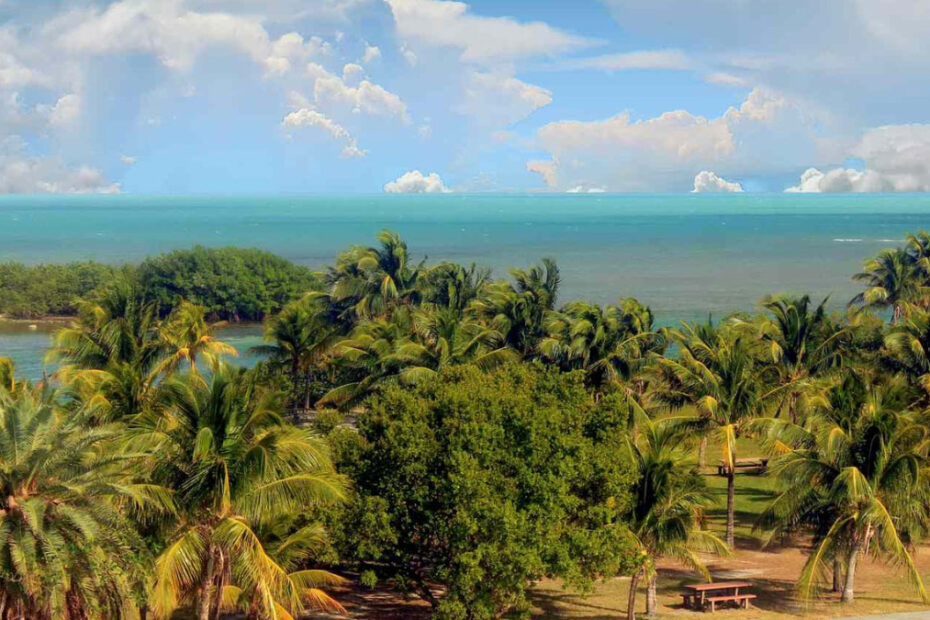Imagine spending a week exploring some of the most stunning and diverse landscapes Florida has to offer. From the lush wetlands of the Everglades to the pristine beaches of Dry Tortugas, Florida’s national parks provide an unforgettable adventure for nature lovers and outdoor enthusiasts alike. Whether you’re an avid hiker, a wildlife photographer, or simply looking to escape the hustle and bustle, this 7-day itinerary will guide you through the Sunshine State’s natural wonders.
You’ll discover hidden gems and iconic sites, each day offering new experiences and breathtaking views. Get ready to immerse yourself in Florida’s unique ecosystems, where you can kayak through mangrove tunnels, snorkel in crystal-clear waters, and witness incredible wildlife up close. Pack your bags, lace up your hiking boots, and let’s begin on a journey that promises both relaxation and excitement in Florida’s national parks.
Key Takeaways
- Explore Diverse Ecosystems: From the Everglades’ tropical wetlands to Biscayne’s marine habitats and Dry Tortugas’ remote island beauty, Florida’s national parks offer a variety of unique natural settings.
- Optimal Visiting Time: The dry season (November to April) provides the best conditions for wildlife viewing, comfortable temperatures, and superior water activities across all parks.
- Essential Activities: Kayak through mangrove tunnels, snorkel in crystal-clear waters, and explore historical structures like Fort Jefferson for a well-rounded adventure.
- Must-See Destinations: Key attractions include Anhinga Trail in the Everglades, Boca Chita Key in Biscayne, and the coral reefs of Dry Tortugas, each offering iconic experiences.
- Practical Planning Tips: Rent a car for flexibility, book accommodations and tours in advance, and pack essentials like insect repellent, sun protection, and hydration supplies.
- Sustainable Travel Practices: Adhere to “Leave No Trace” principles, avoid single-use plastics, and respect wildlife to help preserve these natural wonders for future visitors.
Overview of Florida’s National Parks
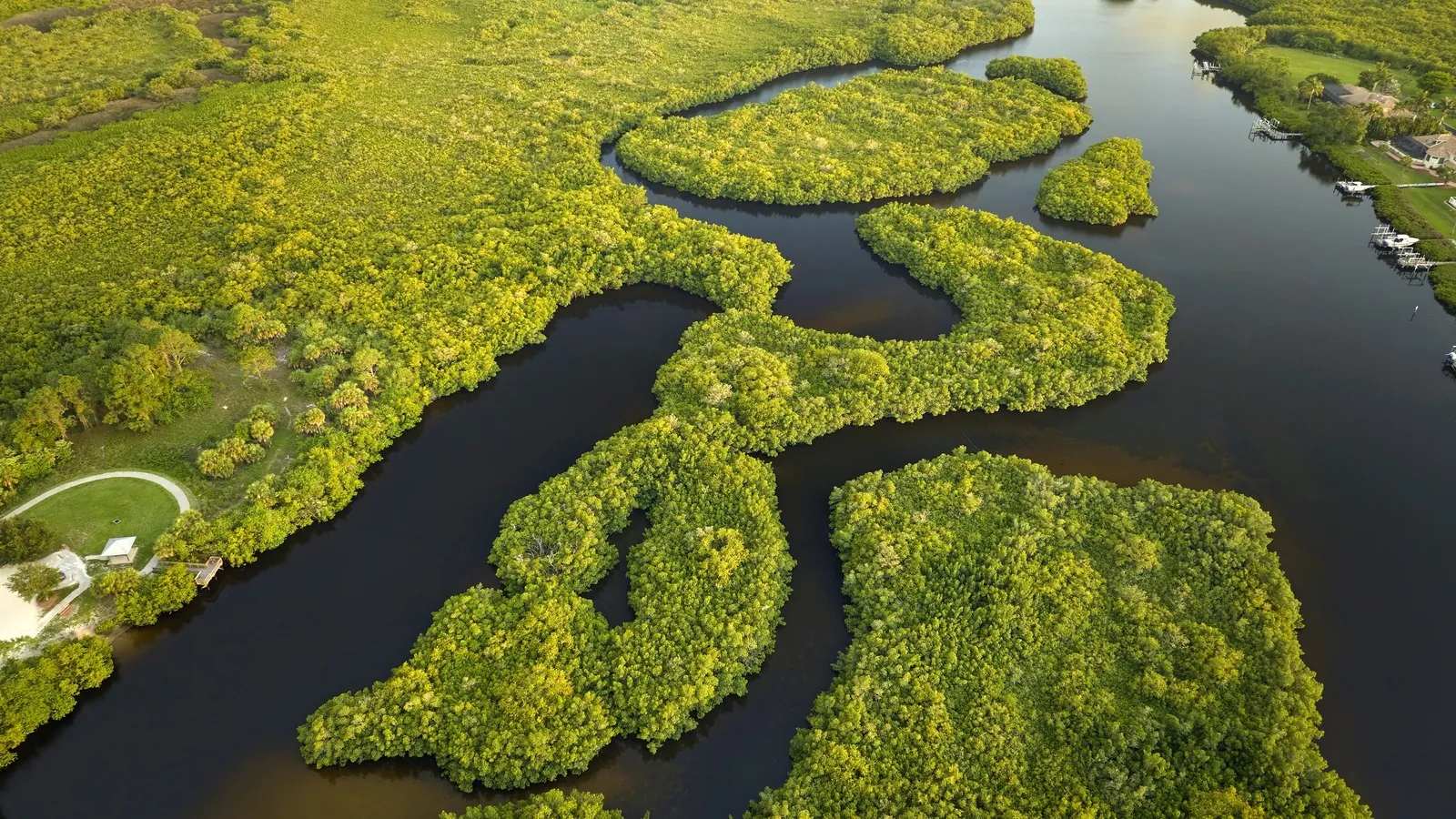
Florida, known for its sunny beaches, also boasts three distinctive national parks waiting for you to explore. Each offers unique ecological and historical experiences, promising diverse adventures in natural settings.
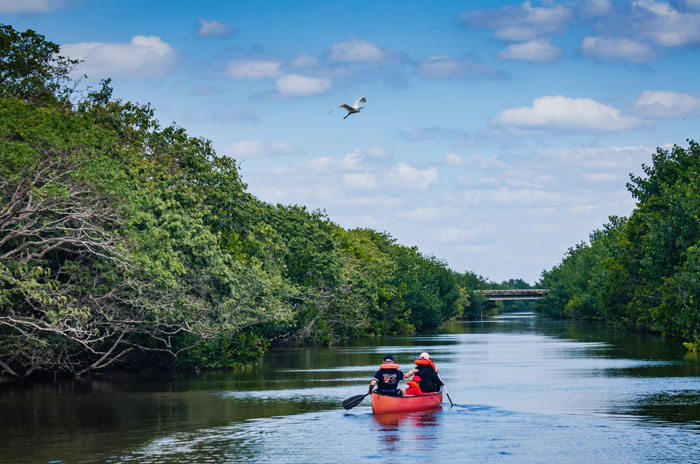
Everglades National Park
Everglades National Park, a vast expanse of tropical wetland, spans over 1.5 million acres. It’s the third-largest national park in the contiguous United States. The park showcases a unique ecosystem home to rare species like the Florida panther and West Indian manatee. The best time to visit is during the dry season (December to April), when mosquitoes are fewer, and wildlife is more visible.
Top Attractions
- Ernest F. Coe Visitor Center: Start your visit with educational exhibits.
- Anhinga Trail: A short, accessible trail to spot alligators and birds.
- Flamingo: The southernmost point offering boat tours and kayaking.
- Shark Valley: Best for biking and panoramic views from an observation tower.
Hidden Gems
- Pinelands Trail: Experience unique pine rockland habitats.
- Nine Mile Pond Canoe Trail: An offbeat way to explore the wetlands.
Accommodations
| Accommodation | Location | Price Range | Amenities |
|---|---|---|---|
| Flamingo Campground | Flamingo | $20-$50 | Tent/RV sites, Picnic tables |
| Long Pine Key Campground | Near Homestead | $20-$40 | Campfire circles, Restrooms |
Dining Highlights
- Robert Is Here: Fruit stand offering fresh produce and milkshakes near Homestead.
- Everglades Gator Grill: Casual dining with local gator fare in Everglades City.
Transportation & Practical Tips
- Rent a car for convenience; many areas are remote.
- Pack insect repellent, sun protection, and plenty of water.
- Guided tours are available if you prefer structured visits.
Biscayne National Park
Biscayne National Park, just south of Miami, preserves Biscayne Bay and its offshore barrier reefs. This marine park covers 95% water, making it ideal for water activities. The best time to visit is between November and May, offering comfortable temperatures and calm seas.
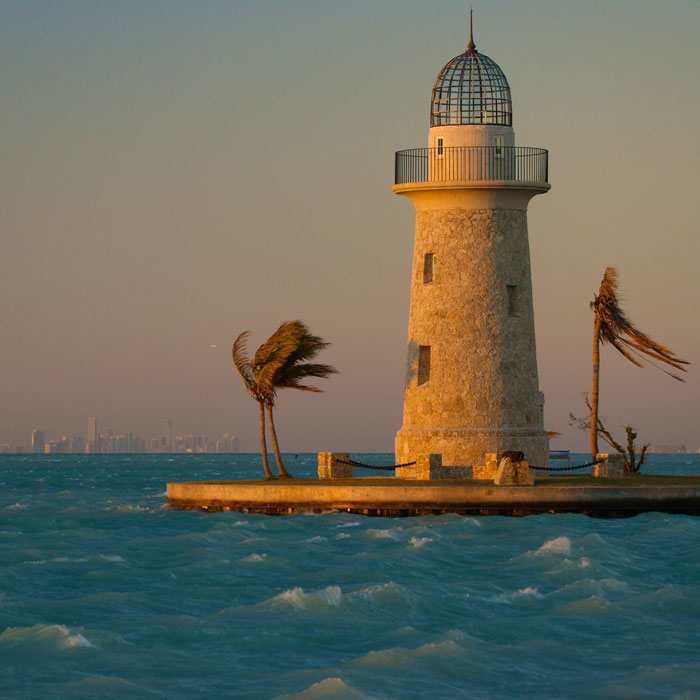
Top Attractions
- Boca Chita Key: Scenic island with historic lighthouse and picnic areas.
- Dante Fascell Visitor Center: Exhibits, films, and information about park activities.
- Elliot Key: Perfect for camping and hiking.
- Underwater Maritime Heritage Trail: Snorkel through shipwrecks and coral reefs.
Hidden Gems
- Jones Lagoon: Kayak through mangroves and spot marine life.
- Fowey Rocks Lighthouse: Explore near this iconic structure offshore.
Accommodations
| Accommodation | Location | Price Range | Amenities |
|---|---|---|---|
| Elliott Key Campground | Elliott Key | $25 | Tent sites, Picnic tables, Toilets |
| Boca Chita Key Campground | Boca Chita Key | $25 | Picnic tables, Toilets |
Dining Highlights
- Black Point Ocean Grill: Enjoy fresh seafood with stunning views.
- La Camaronera Seafood Joint and Fish Market: A Miami favorite for fried fish and shrimp.
Transportation & Practical Tips
- Access by boat; consider renting or joining a tour.
- Snorkeling gear recommended for underwater explorations.
- Dry bags are useful for protecting belongings.
Dry Tortugas National Park
Dry Tortugas National Park is a remote paradise 70 miles west of Key West. Known for Fort Jefferson and its vibrant coral reefs, it’s accessible only by boat or seaplane. Visit between October and April for ideal weather.
Top Attractions
- Fort Jefferson: Historic fort with guided tours available.
- Garden Key: Snorkel and swim in crystal-clear waters.
- Loggerhead Key: Spot nesting sea turtles and visit the lighthouse.
Hidden Gems
- Windjammer Wreck: An underwater site perfect for snorkeling.
- Bush Key: A birdwatcher’s haven, especially during migration seasons.
Accommodations
| Accommodation | Location | Price Range | Amenities |
|---|---|---|---|
| Camping on Garden Key | Garden Key | $15 | Primitive sites, Picnic tables, Composting toilets |
Dining Highlights
- Pack your own food: No dining facilities on-site.
- Dry bag for food storage: Essential for keeping meals fresh and dry.
- Ferry services from Key West or seaplane transfers.
- Book in advance; limited spots for campgrounds.
- Bring all essentials, including water and food, as there are no services on the island.
Venture into these unique national parks to experience Florida beyond its beaches. Each promises distinct adventures, from exploring underwater worlds to roaming historic forts and vast wetlands.
Best Time to Visit Florida’s National Parks
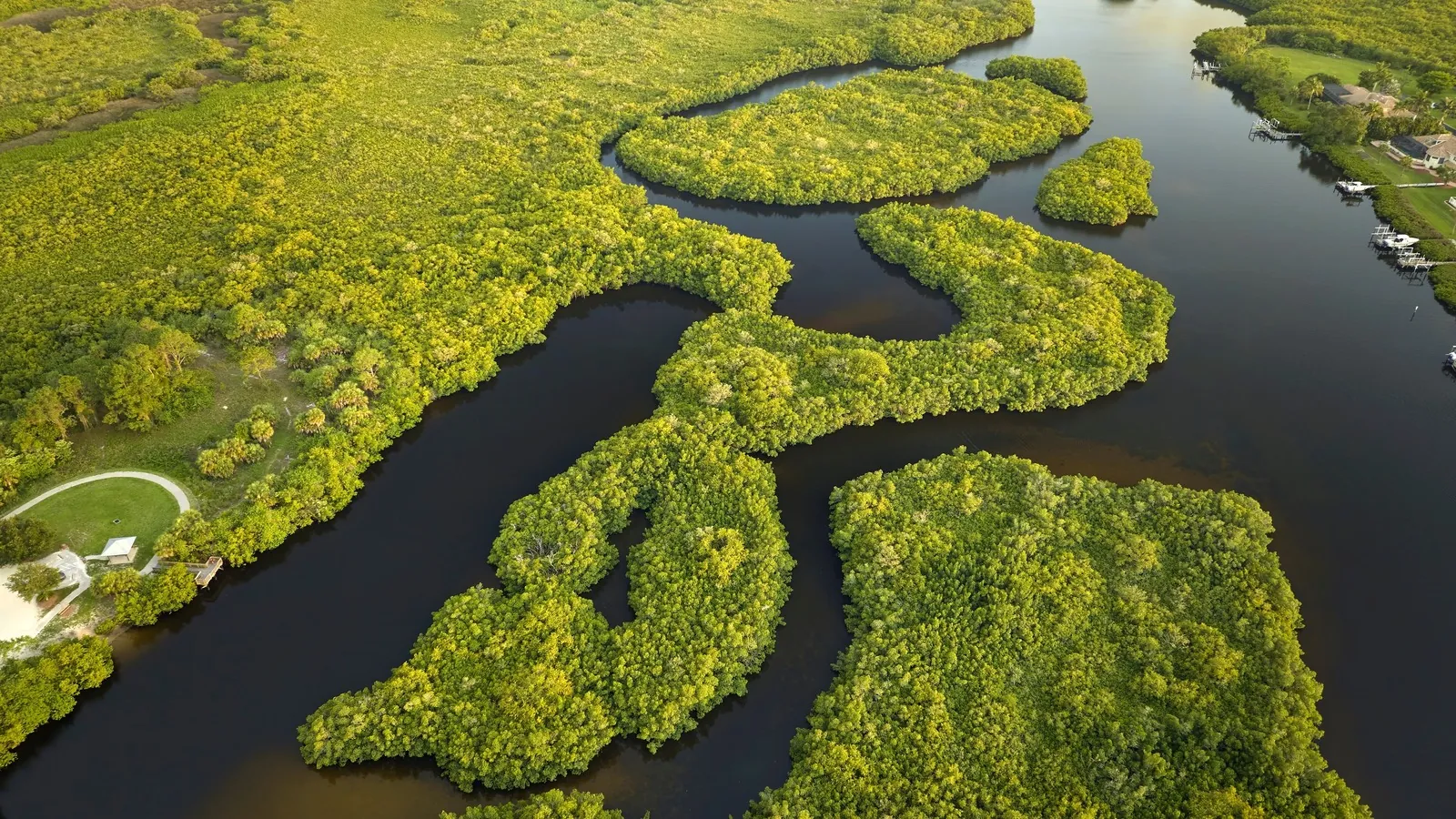
Dry Season vs. Wet Season
Florida’s national parks showcase different charms depending on the season. The dry season, from November to April, is generally the best time to visit. During these months, you’ll find milder temperatures, lower humidity, and minimal rain. For instance, Everglades National Park is more accessible in the dry season when water levels are lower, making wildlife sightings on trails like Anhinga Trail more frequent. Conversely, the wet season, from May to October, brings higher temperatures, increased humidity, and frequent afternoon thunderstorms. This season enhances the lush, green flora and provides a unique, albeit more challenging, experience.
Considerations for Each Park
- Everglades National Park: For optimal wildlife observation, visit during the dry season. Bird migrations peak, and you can spot alligators basking in the sun. The Flamingo area becomes easier to navigate and offers clear waters perfect for kayaking and boating.
- Biscayne National Park: The dry season provides the best conditions for water activities. Clear waters around Boca Chita Key and the Maritime Heritage Trail enhance experiences like snorkeling and scuba diving. The mild weather is ideal for exploring the park’s marine ecosystems.
- Dry Tortugas National Park: Visiting in the dry season ensures calmer seas, making the boat or seaplane journey to Fort Jefferson more pleasant. Snorkeling and swimming conditions are better, leveraging visibility to explore the coral reefs.
General Seasonal Considerations
- Crowds and Availability: National parks see increased visitors during the dry season. Plan and book accommodations and tours in advance. Popular spots like Shark Valley and Fort Jefferson can become crowded, so early arrivals are advised.
- Temperature and Weather: The subtropical climate means temperatures can still be warm in the dry season. Pack accordingly with lightweight, breathable clothing, sun protection, and hydration essentials. The wet season requires more preparation for potential heavy rains, waterproof gear, and insect repellents.
- Wildlife Behavior: Wildlife patterns change with the seasons. Dry seasons produce more predictable animal behavior due to concentrated water sources, while wet seasons disperse animals more widely.
- Cultural Events: Various events and festivals occur during the winter months in surrounding cities like Miami and Homestead, enhancing your trip with local cultural experiences. Check local schedules for opportunities to immerse in regional culture.
| Season | Temperature Range (°F) | Average Rainfall (inches) |
|---|---|---|
| Dry Season | 50-77 | 1-2 |
| Wet Season | 77-90 | 4-6 |
Planning your visit around these factors ensures an enjoyable experience at Florida’s diverse national parks.
Getting to Florida’s National Parks
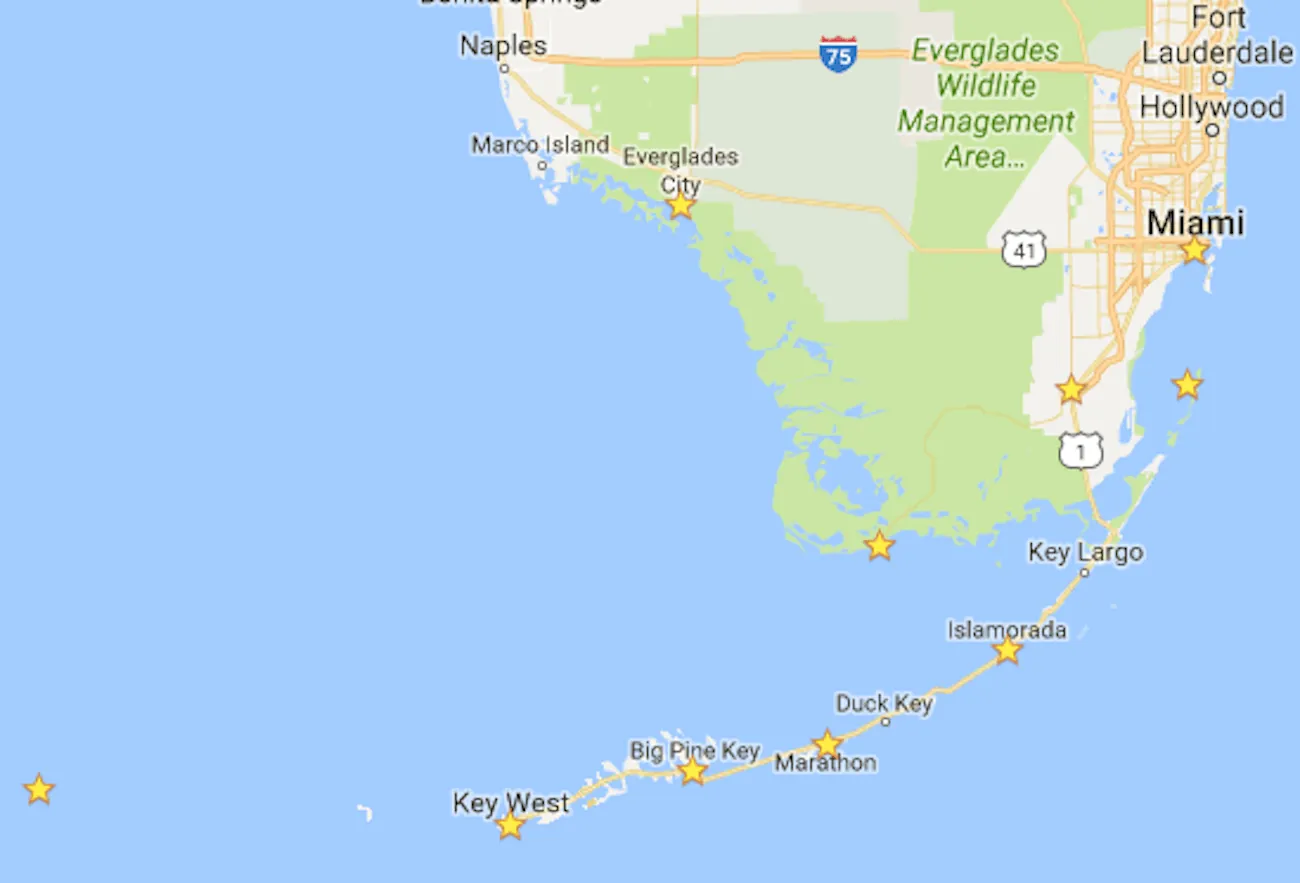
Arrival
Most itineraries kick off in Miami or Ft. Lauderdale, which have major international airports. You can fly into either city and then rent a car to start your road trip. These cities are ideal hubs for launching your adventure into Florida’s national parks.
Transportation Options
- Rental Car: Renting a car is essential for flexibility and ease of travel between the parks. Note that dropping the car in Key West instead of returning it to Miami can incur a higher drop-off fee.
- Driving: Driving is the primary mode of transportation for this trip. The Overseas Highway, connecting the mainland to Key West, offers scenic views and is a highlight of the journey.
- Plan for the Season: Visit during the dry season (November to April) for optimal wildlife observation and water activities. The wet season (May to October) brings lush flora but also higher humidity and thunderstorms.
- Pack Accordingly: Bring light, breathable clothing for hot weather, as well as water-resistant gear and insect repellent, especially for Everglades National Park.
- Stay Connected: Ensure you have a reliable GPS or a physical map. Cell service can be spotty in remote areas.
- Reservations: Book accommodations and any park permits in advance to secure your spot, particularly during peak seasons.
- Local Insights: Engage with locals for insider tips on hidden gems and lesser-known attractions in each park.
7-Day Florida National Park Itinerary
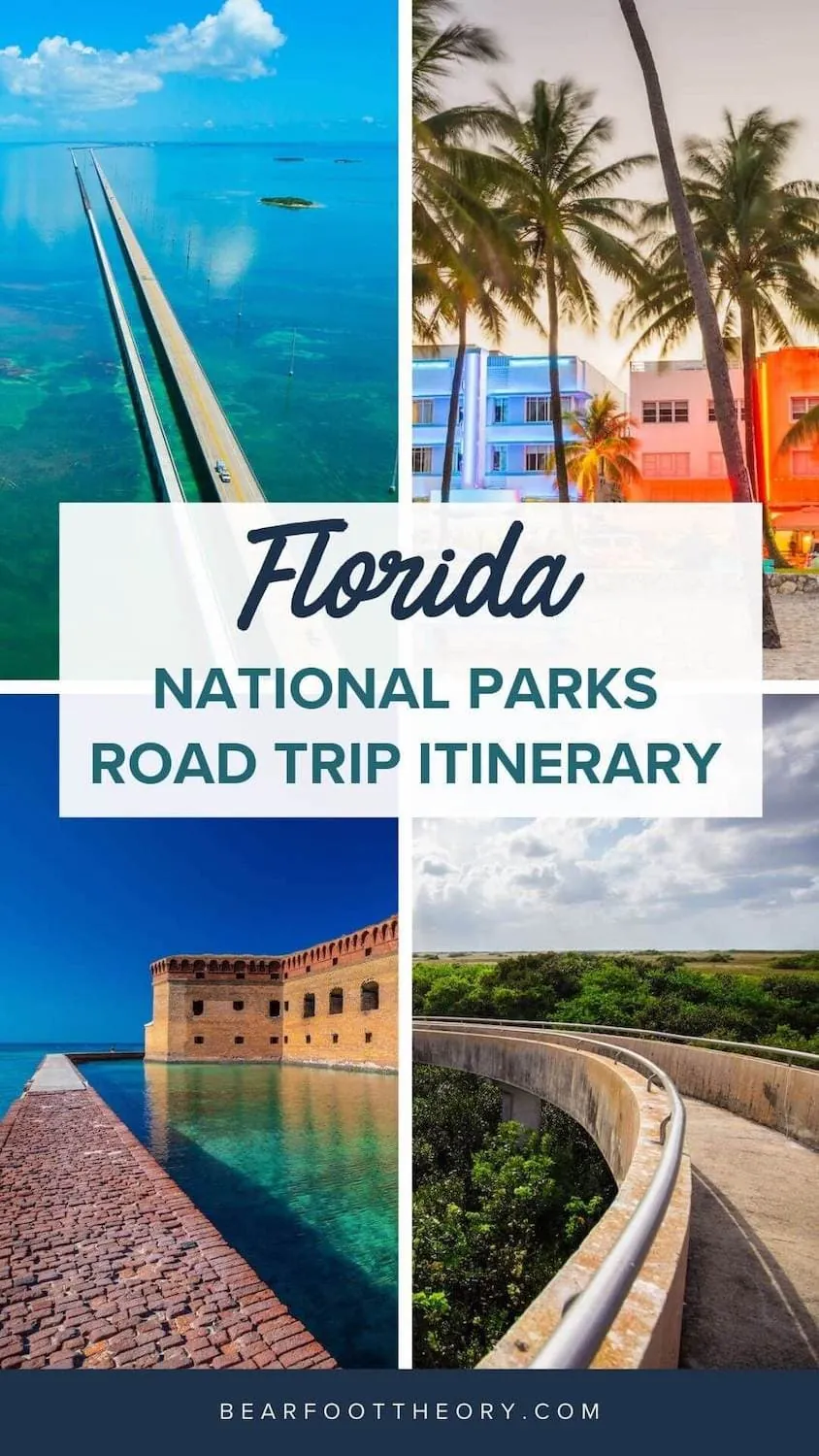
Day 1: Exploring Everglades National Park
Start your adventure by diving into the rich ecosystems of the Everglades National Park. This tropical wetland world, home to rare species, offers a unique experience unlike any other.
Morning
Arrive early at the Ernest F. Coe Visitor Center by 8 am to avoid crowds. This center, located near Homestead, is a 20-minute drive from town. Get park information here and begin your trip with a scenic drive along Highway 9336 toward the Flamingo area. Along the way, stop at:
- Anhinga Trail: Famous for wildlife viewing. Spot alligators, birds, and turtles.
- Mahogany Hammock Trail: Explore a short boardwalk showcasing the park’s diverse plant life.
- Gumbo Limbo Trail: Discover a lush, tropical hardwood hammock.
Afternoon
Continue to the Flamingo area to see manatees and marine life. Then, head north to Shark Valley, one of the best wildlife viewing spots in the Everglades. Experience a panoramic view atop the 65-foot observation tower or cycle through the 15-mile loop road.
- Flamingo Area: Ideal for observing manatees and other marine life.
- Shark Valley: Offers an observation tower and a 15-mile loop for cycling and walking.
Top Attractions
- Shark Valley: Observation tower and loop road. Great for panoramic views.
- Anhinga Trail: High wildlife-spotting potential, including alligators and birds.
- Flamingo Area: Perfect for manatee sightings.
- Mahogany Hammock Trail: Boardwalk through tropical vegetation.
Hidden Gems
- Pa-hay-okee Overlook: A less-visited spot with sweeping views of the sawgrass prairie.
- Nine Mile Pond Canoe Trail: Explore the watery world by canoe for a unique perspective.
Accommodations
| Accommodation | Type | Price Range | Amenities |
|---|---|---|---|
| Flamingo Campground | Campsite | $ | Tent/RV sites, marina |
| Long Pine Key Campground | Campsite | $ | Tent/RV sites, close to trails |
| Everglades City Motel | Hotel | $$ | Wi-Fi, room service, proximity to park |
Dining Highlights
- Flamingo Marina Store: Offers snacks, drinks, and basic groceries.
- Local Restaurants in Homestead: Sample local cuisine at places like Ma’s Fish Camp and Shiver’s BBQ.
Transportation & Practical Tips
- Rent a car for flexibility and easy access to various park areas.
- Dress in light, breathable clothing. Bring water-resistant gear and insect repellent.
- Carry a reliable GPS or maps.
- Reserve accommodations in advance.
- Engage with park rangers and locals for insightful tips.
Climate Data
| Month | Average High (°F) | Average Low (°F) | Precipitation (in) |
|---|---|---|---|
| January | 77 | 53 | 2.1 |
| July | 91 | 73 | 7.8 |
Sustainability Tips
- Follow Leave No Trace principles.
- Use refillable water bottles to reduce plastic waste.
- Stick to designated trails to protect fragile ecosystems.
- Admission to Everglades National Park costs $30 per vehicle for a 7-day pass.
- Camping fees range from $20-$30 per night.
- Consider packing snacks and meals to save on dining costs.
Day 2: Royal Palm and Flamingo in Everglades
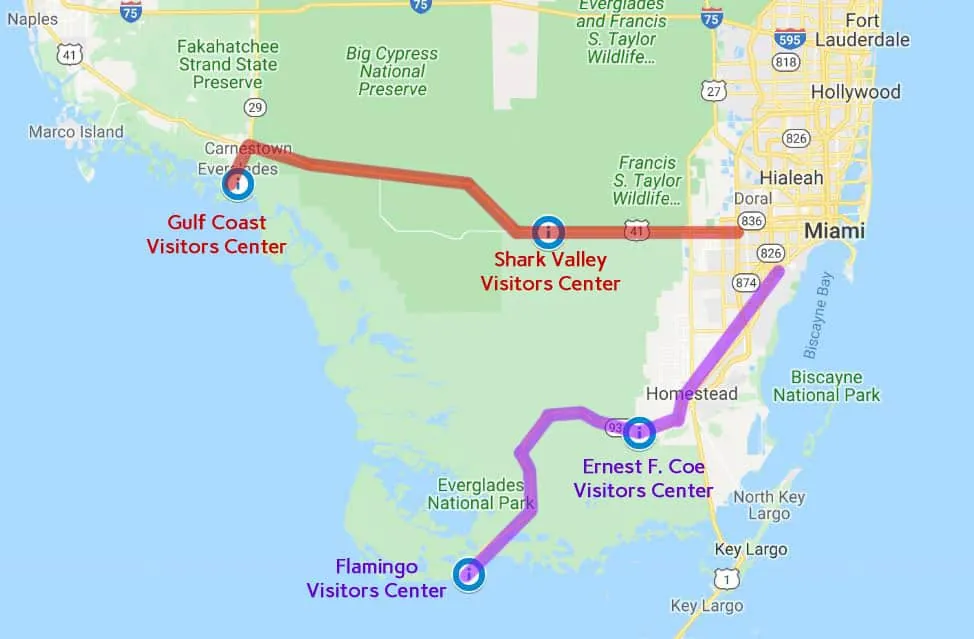
Morning: Royal Palm Area
Start at the Ernest F. Coe Visitor Center: Begin your day by visiting the Ernest F. Coe Visitor Center, the main entrance to the Everglades National Park. This center offers an excellent introduction to the park’s unique ecosystem. Here you can find maps, guides, and information on various trails and activities.
Anhinga Trail: Head to the Royal Palm area and hike the Anhinga Trail, a popular and easily accessible 0.8-mile loop trail. Known for abundant wildlife, including alligators, birds, and turtles, this boardwalk trail winds through a sawgrass marsh, making it ideal for up-close wildlife observation.
Canoeing in Flamingo
Experience the serene beauty of the Flamingo area by canoeing through the park’s waterways. The Flamingo area, located near the southern tip of Everglades National Park, offers a mix of mangrove forests, open lagoons, and tidal creeks. Rent a canoe from the Flamingo Marina and paddle through scenic routes like the Nine Mile Pond or the Hell’s Bay Canoe Trail. Look for manatees, dolphins, and the American crocodile while exploring these waters.
Interpretive Trails in Royal Palm
Venture onto the interpretive trails in the Royal Palm area for educational and immersive experiences. The Gumbo Limbo Trail, a 0.4-mile loop, takes you through a shaded hammock of gumbo limbo trees and royal palms. Informative signs provide insights into the flora and fauna. The Pinelands Trail offers a 0.4-mile walk through a pine rockland habitat, one of the park’s rarest ecosystems. These trails are excellent for learning about the Everglades’ natural history and diverse ecosystems.
Day 3: Biscayne National Park Adventures
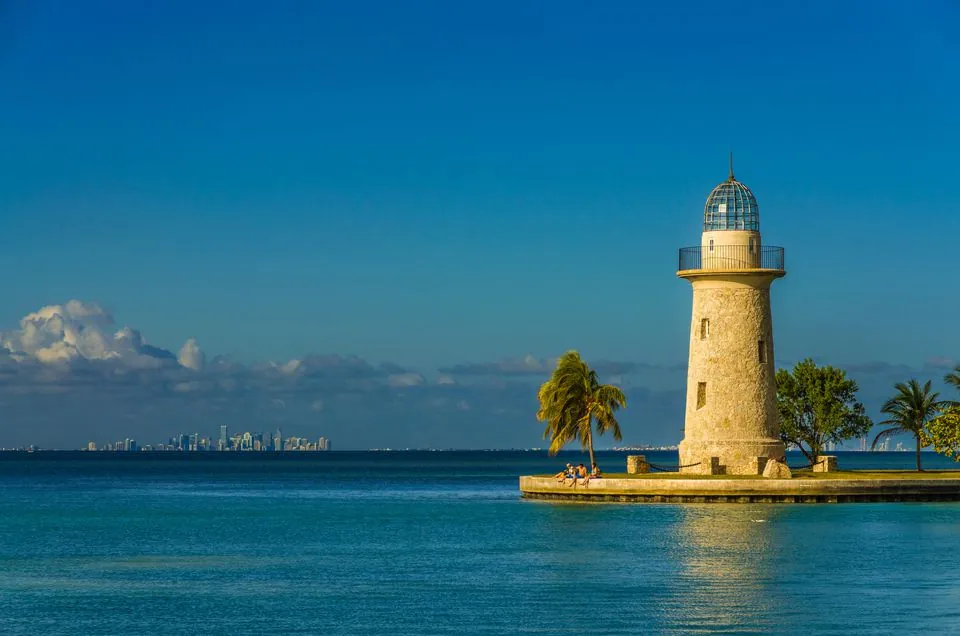
Visitor Center and Jetty Trail
Start your day at the Dante Fascell Visitor Center. This serves as the primary entrance to Biscayne National Park. Gather useful information, watch an informative park video, and get an overview of the park’s unique ecosystem. Engage with exhibits that detail the area’s rich natural history and diverse marine life.
After the visitor center, take a short walk on the Jetty Trail. This paved path leads to a jetty extending into Biscayne Bay. The trail offers stunning views of the bay, making it an excellent spot for birdwatching and observing marine life. Keep an eye out for ospreys and pelicans, which are commonly seen in the area.
Snorkeling and Diving Options
Biscayne National Park is renowned for its underwater attractions, including the largest coral reef system in the continental United States. A guided boat tour is necessary to access the offshore reefs. These tours often include snorkeling and diving options, catering to different skill levels.
Jump into the clear waters to explore vibrant coral formations and swim amongst hundreds of fish species. It’s not uncommon to spot sea turtles and rays gliding through the water. For snorkeling enthusiasts, shallow reefs like the Maritime Heritage Trail offer a closer look at marine life and submerged shipwrecks. Bring your underwater camera for unforgettable shots of this underwater wonderland.
Day 4: Road Trip through the Florida Keys

Experience the allure of the Florida Keys on Day 4. These islands, connected by the stunning Overseas Highway, offer a mix of natural beauty and cultural attractions.
Beaches and Snorkeling in the Keys
The Florida Keys are renowned for their clear waters and vibrant marine life. Head to Bahia Honda State Park, often called the best beach in the Keys, for its white sand and excellent snorkeling spots. Swim among colorful fish and spot coral reefs close to the shore. Another must-visit beach is Sombrero Beach in Marathon, offering a family-friendly atmosphere with picnic areas and playgrounds.
For snorkeling enthusiasts, the John Pennekamp Coral Reef State Park is a highlight. It’s the first undersea park in the U.S. Coral formations and schools of fish make it a snorkeler’s paradise. Boat tours provide access to off-shore reefs where you can encounter barracudas and parrotfish. Don’t forget your underwater camera to capture these moments.
Key Attractions to Visit
Tour the unique attractions along the Florida Keys.
- Key Largo: Visit the African Queen Canal Cruise, where you can board the actual boat from the classic film.
- Islamorada: Explore the Theater of the Sea, where you can swim with dolphins or sea lions.
- Marathon: Walk the Old Seven Mile Bridge for breathtaking panoramic views and photo opportunities.
- Big Pine Key: Take a detour to the National Key Deer Refuge to spot the endangered Key deer.
- Key West: Don’t miss the Ernest Hemingway Home and Museum or the Southernmost Point Buoy.
Accommodations
Here’s a comparison to help you choose the best accommodation for your needs.
| Location | Accommodation | Amenities | Price Range (per night) |
|---|---|---|---|
| Key Largo | Pelican Cottages | Waterfront, BBQ facilities, free Wi-Fi | $150-$250 |
| Islamorada | Cheeca Lodge | Private beach, golf course, spa | $350-$500 |
| Marathon | Tranquility Bay Resort | Private beach, family rooms, pools | $300-$450 |
| Big Pine Key | Little Palm Island | Adults only, spa, all-inclusive | $800-$1,200 |
| Key West | Southernmost Beach | Oceanfront, pools, bar | $400-$600 |
Dining Highlights
The Florida Keys offer a range of dining options to satisfy your taste buds. For a taste of local seafood, visit The Fish House in Key Largo. Enjoy fresh catches with a waterfront view at Hogfish Bar & Grill in Key West. The Keys are also famous for conch fritters and Key lime pie; try them at Key Largo Conch House and Kermit’s Key West Key Lime Shoppe respectively.
Transportation & Practical Tips
Exploring the Keys is part of the adventure. Renting a car provides the most flexibility. The Overseas Highway, U.S. Route 1, spans 113 miles from Key Largo to Key West, offering scenic views and photo-worthy stops.
- Gas Stations: Located frequently along the route.
- Tolls: Minimal, but carry some cash just in case.
- Packing Tips: Bring sunblock, hats, and swimwear. Snorkeling gear is also a good idea if you plan on diving often.
Visiting off-peak, in late spring or early fall, avoids higher rates and crowds while still enjoying pleasant weather. For sustainability, support eco-friendly businesses and respect marine life during water activities.
Optimize every moment on this road trip through the Florida Keys, ensuring an unforgettable experience brimming with adventure and natural beauty.
Day 5: Discovering Dry Tortugas National Park
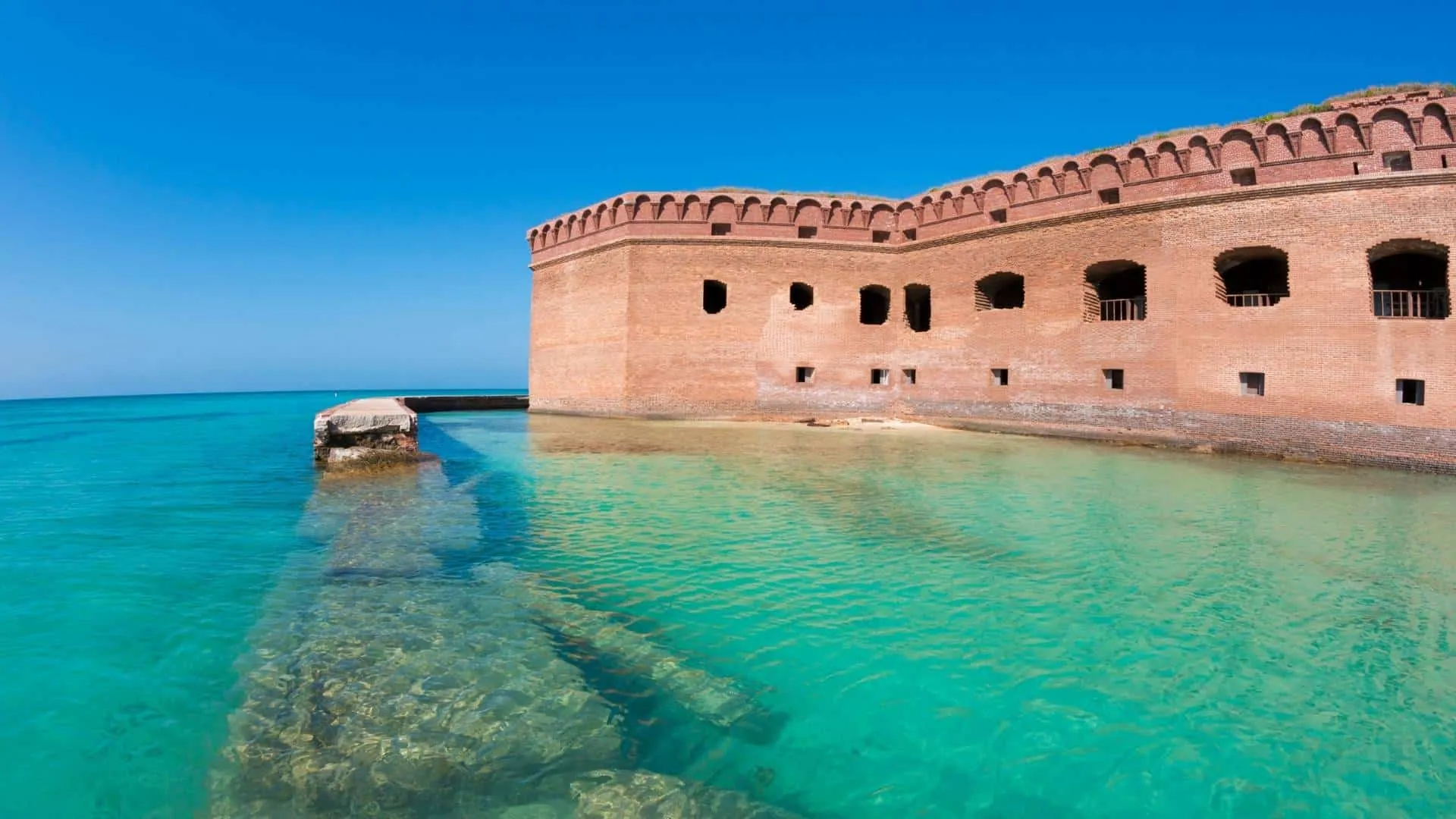
Dry Tortugas National Park, situated about 70 miles west of Key West, is an island paradise renowned for its pristine beaches and historic Fort Jefferson. Enjoy the crystal-clear waters and abundant marine life in this remote national park.
Exploring Fort Jefferson
Fort Jefferson, a massive coastal fortress, dominates the island world. Constructed in the 19th century, the fort provides a glimpse into military history, showcasing remarkable brickwork and iconic structures.
Top attractions within Fort Jefferson include:
- Parade Ground: Discover the central open area, once a bustling military hub.
- Moat: Walk along the scenic moat, home to various marine species.
- Garden Key Lighthouse: Capture panoramic views from this historic beacon.
- Dungeons: Explore these eerie chambers, once used to imprison criminals.
Ranger-led tours offer insightful explanations of the fort’s history and architecture. Don’t miss informative panels detailing the fort’s construction and strategic significance during the Civil War.
Beach Activities
Dry Tortugas offers some of Florida’s most stunning beaches. Engage in various beach activities that highlight the unique marine environment.
- Snorkeling: The park’s clear waters and coral reefs provide superb snorkeling opportunities. Gardner and Bush Key are prime locations, featuring vibrant marine life like parrotfish and sea turtles.
- Swimming: Enjoy the warm, calm waters perfect for a relaxing swim.
- Sunbathing: Stretches of soft, white sand invite you to unwind under the sun.
- Kayaking: Explore nearby islands and hidden coves, rental equipment is often available from Key West.
For a comprehensive experience, bring sunscreen, a hat, and plenty of water. Distant and peaceful, this part of the park rewards preparation with memorable seclusion and natural beauty.
Day 6: Returning to Miami or Fort Lauderdale
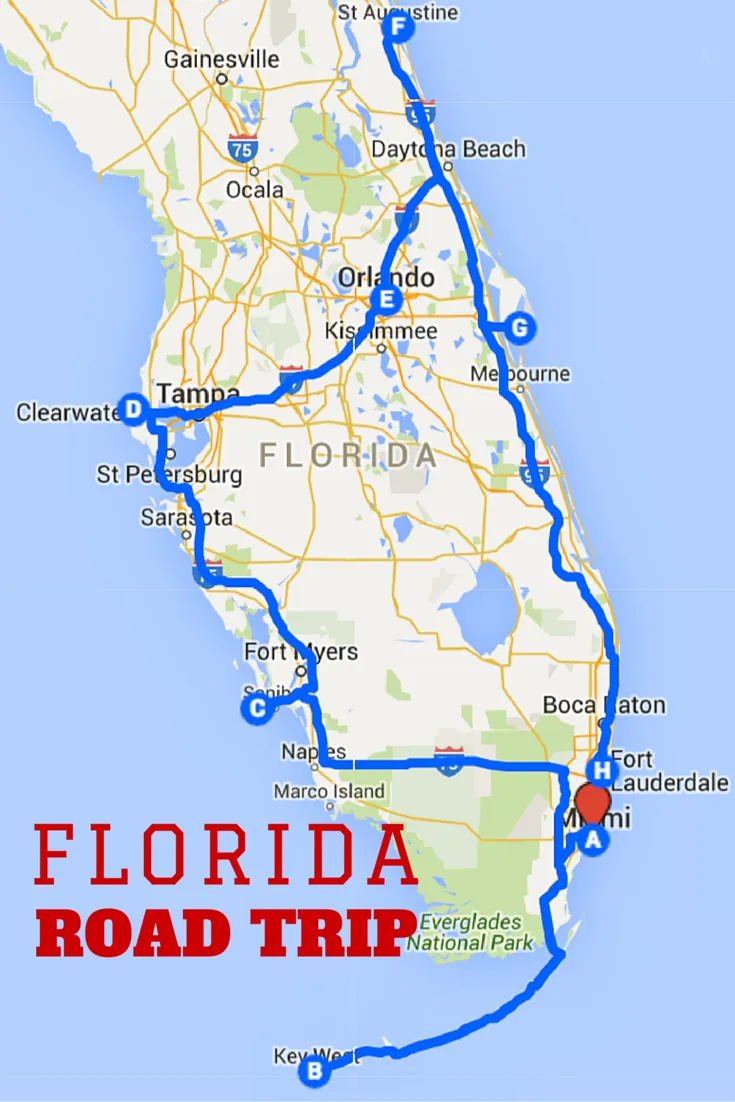
Day 6 marks your return journey to Miami or Fort Lauderdale, where the adventure began. The drive back offers opportunities to explore additional attractions, enjoy diverse dining options, and reflect on your journey through Florida’s national parks.
Top Attractions
- Miami Beach: Known for its Art Deco architecture and vibrant nightlife, Miami Beach is a must-visit.
- Las Olas Boulevard (Fort Lauderdale): This famous street offers unique shops, art galleries, cafes, and restaurants.
- Little Havana (Miami): Experience Cuban culture through food, music, and local art.
- Wynwood Walls (Miami): Renowned for its street art and murals, it’s a paradise for art lovers.
- Historic Stranahan House Museum (Fort Lauderdale): Learn about the city’s history at this restored 1901 trading post.
Hidden Gems
- Anne Kolb Nature Center: Located in Hollywood, FL, this nature preserve features mangrove trails and an observation tower.
- Oleta River State Park (North Miami): Ideal for kayaking, biking, and picnicking in a natural setting.
- Secret Woods Nature Center: A peaceful escape with nature trails and butterfly gardens in Dania Beach.
Accommodations
| Location | Hotel Name | Amenities | Price Range |
|---|---|---|---|
| Miami | The Betsy Hotel | Rooftop pool, beachfront | $$$ |
| Miami | Freehand Miami | Hostel with pool, nightlife | $ |
| Fort Lauderdale | Lago Mar Beach Resort & Club | Private beach, family-friendly | $$ |
| Fort Lauderdale | The Ritz-Carlton, Fort Lauderdale | Oceanfront, spa | $$$$ |
Dining Highlights
- Joe’s Stone Crab (Miami): Famous for seafood and historic ambiance.
- Versailles (Little Havana): Renowned for authentic Cuban cuisine.
- Coconuts (Fort Lauderdale): Waterfront dining with fresh seafood and Key Lime pie.
- Car Rentals: Available at both Miami and Fort Lauderdale airports. Companies include Hertz, Enterprise, and Avis.
- Public Transport: Miami-Dade Transit and Broward County Transit offer bus and rail services.
- Packing: Light, breathable clothing, comfortable walking shoes, sunscreen, and hats are essential.
- Timing: Return travel should consider rush hours (7-9 AM and 4-6 PM) for a smoother journey.
The return to Miami or Fort Lauderdale concludes a remarkable journey through Florida’s diverse national parks, leaving you with memories of stunning landscapes and unique ecosystems.
Day 7: Optional Day for Additional Activities
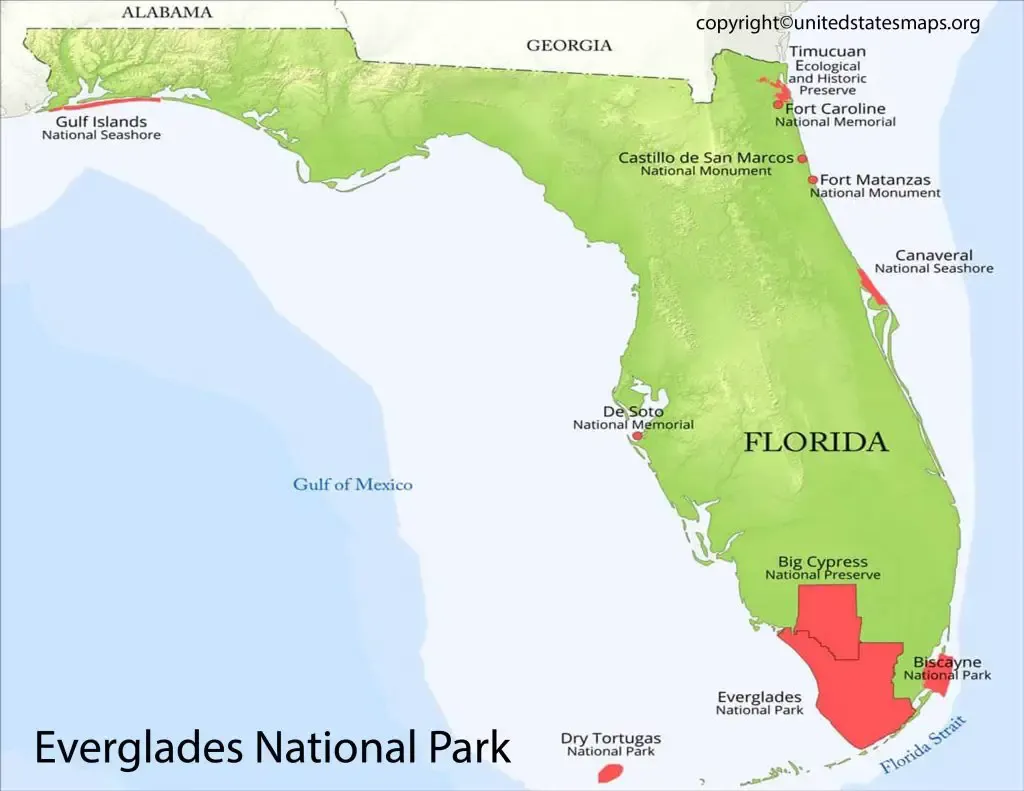
Day seven provides flexibility for those seeking extra adventures or relaxation. Explore lesser-known spots near your chosen base or revisit favorite attractions from earlier in the trip.
Unique Activities
Florida Keys:
- Fishing Charters: All-day trips offer deep-sea or reef fishing, with the chance to catch marlin, grouper, and snapper.
- Kayaking: Paddle through mangroves and near coastlines, observing marine life up close.
- Natural Splendor: Visit the Florida Keys Wild Bird Rehabilitation Center to see rescued birds.
Miami:
- Art Deco District: Walk through historic South Beach, an architectural wonder.
- Vizcaya Museum and Gardens: Explore this stunning, European-inspired estate.
- Little Havana Food Tour: Savor Cuban cuisine and culture on a guided tour.
Fort Lauderdale:
- Venice of America: Take a water taxi or gondola ride through the city’s intricate canal system.
- Bonnet House Museum & Gardens: Discover this historic house and its beautiful gardens.
- Butterfly World: Walk through lush tropical gardens filled with thousands of butterflies.
Hidden Gems
- Anne Kolb Nature Center: Offers canoe trails, an observation tower, and a display hall featuring local wildlife.
- Oleta River State Park: Great for mountain biking, kayaking, and swimming in Biscayne Bay.
- Secret Woods Nature Center: Provides serene hiking trails and a butterfly garden.
Accommodations
| Location | Type | Price Range (per night) | Unique Feature |
|---|---|---|---|
| Florida Keys | Beachfront Resort | $200 – $500 | Private beaches, water sports |
| Miami Beach | Boutique Hotel | $150 – $400 | Art Deco design, beach proximity |
| Fort Lauderdale | Luxury Resort | $250 – $600 | Canal views, upscale amenities |
| Homestead | Budget Motel | $80 – $150 | Proximity to Everglades entrance |
Dining Highlights
- Key Largo Conch House: Famous for conch fritters and Key Lime pie.
- Joe’s Stone Crab (Miami Beach): Iconic seafood restaurant offering fresh stone crab claws.
- Coconuts (Fort Lauderdale): Waterfront dining with Caribbean-inspired cuisine.
- Robert Is Here (Homestead): Quaint fruit stand known for tropical shakes and local produce.
- Rentals: Car rentals provide the most flexibility for reaching remote areas and hidden gems.
- Navigation: Use GPS or maps, especially in the Everglades and less developed regions.
- Sustainability: Support eco-friendly businesses, avoid single-use plastics, and respect wildlife habitats.
- Seasonal Considerations: Dry season (November to April) offers ideal weather, while the wet season (May to October) has lush scenery but higher humidity and possible storms.
Day seven offers diverse activities and new experiences, enhancing the exploration of Florida’s national parks and nearby attractions.
Camping in Florida’s National Parks
Experience the best of Florida’s national parks by camping amidst its unique landscapes. Diving into serene surroundings under starry skies offers a tangible connection to nature.
Campgrounds in Everglades National Park
Everglades National Park presents a diverse camping experience. Two main campgrounds cater to different preferences.
- Long Pine Key Campground: Located near the Homestead entrance, Long Pine Key Campground offers 108 drive-up sites surrounded by tall pine trees. Open seasonally from November to May, it features picnic tables, fire rings, and restrooms with cold showers, making it ideal for RV and tent camping. Bicycles are available for rent to explore nearby trails.
- Flamingo Campground: Situated closer to Florida Bay, Flamingo Campground provides 234 sites, including walk-in sites by the water. With clean restrooms, solar-heated showers, and a marina store, it’s open year-round. This location offers splendid views, with frequent sightings of manatees and dolphins. Canoe, kayak, and bicycle rentals are available, maximizing your outdoor adventures.
Camping Near the Parks
For those seeking options near the other featured parks, several campgrounds cater to various needs.
- Biscayne National Park: Biscayne offers limited on-site camping on Elliott Key and Boca Chita Key, accessible only by boat. Elliott Key campground features restrooms, picnic tables, and grills but no fresh water or electricity. Boca Chita Key provides a more primitive experience with limited facilities. Supplies, including fresh water, must be packed in.
- Dry Tortugas National Park: Camping is available on Garden Key year-round. Facilities include restrooms, picnic tables, and grills, but no fresh water or electricity. Reservations are recommended due to limited space, allowing only 10 campers per site. The seclusion provides a pristine and undisturbed setting, perfect for snorkeling and beach activities.
Accommodations:
| Park/Campground | Site Type | Facilities | Accessibility | Cost |
|---|---|---|---|---|
| Long Pine Key (Everglades) | Drive-up | Restrooms, showers | Near Homestead | $25/night |
| Flamingo (Everglades) | Drive-up, Walk-in | Solar showers, marina store | Florida Bay | $20-$30/night |
| Elliott Key (Biscayne) | Walk-in | Restrooms, grills | Boat access only | $15/night |
| Boca Chita Key (Biscayne) | Walk-in | Limited facilities | Boat access only | Free |
| Garden Key (Dry Tortugas) | Walk-in | Restrooms, grills | Boat/Seaplane only | $15/night |
Respect park rules and participate in “Leave No Trace” practices to maintain the natural beauty for future visitors. Consider visiting the drier months, from November to April, when the weather is more predictable and wildlife more visible. Whether in a tent or RV, camping in Florida’s national parks offers unforgettable, immersive experiences.
Tips for Visiting Florida’s National Parks
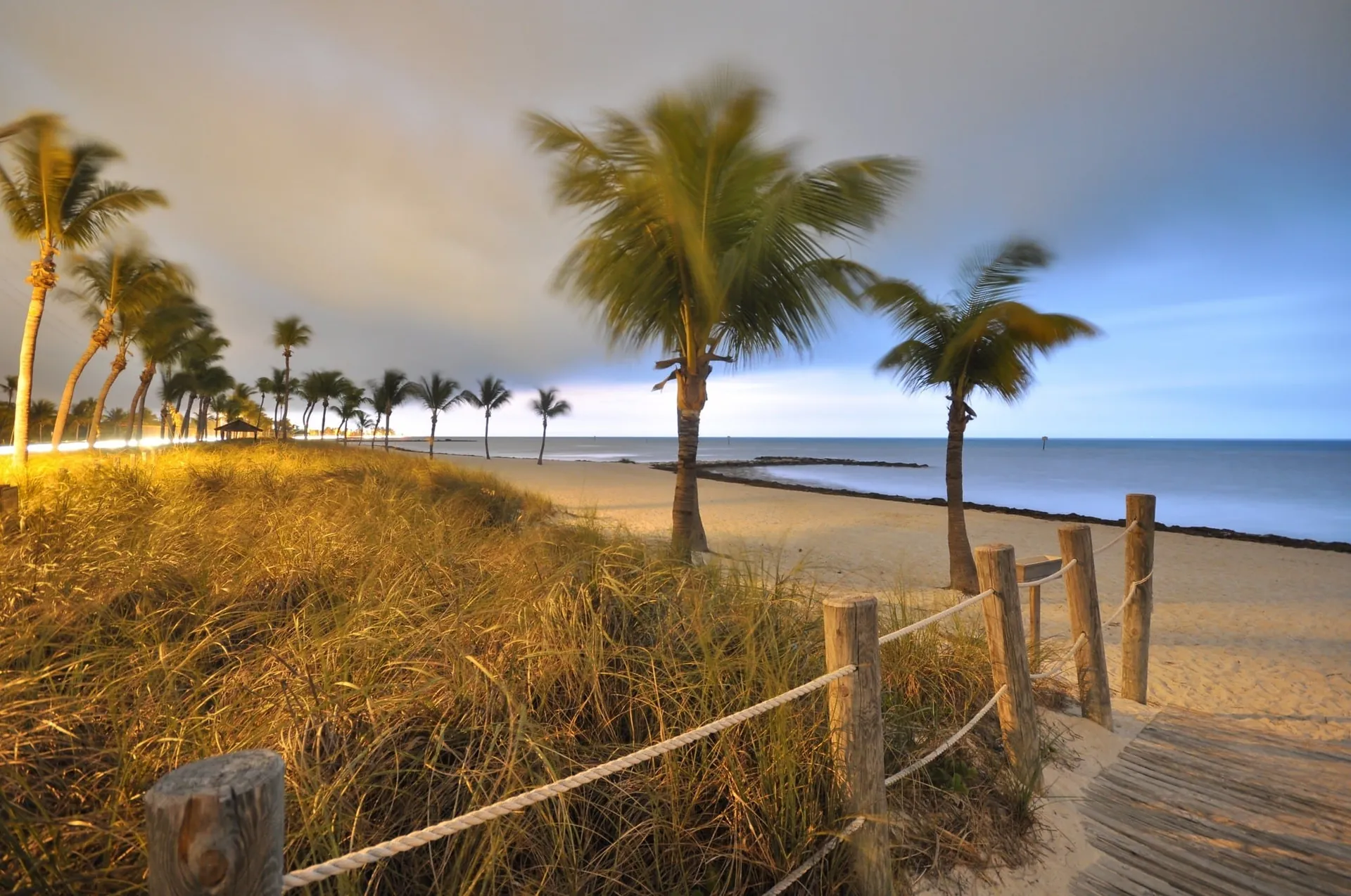
Planning a trip to Florida’s national parks? These tips will help you navigate and enjoy your adventure while preserving these natural treasures.
Pack Smart and Light
Florida’s climate varies, but generally expect temperatures between 70-90°F year-round. Light, breathable clothing is essential. For the wet season (May to October), pack water-resistant gear and insect repellent. During the dry season (November to April), bring sunscreen, a wide-brim hat, and sunglasses.
Stay Hydrated
Florida’s humidity demands regular hydration. Carry a reusable water bottle and refill at visitor centers. Many parks have refill stations and vending machines.
Protect Wildlife and Yourself
Always observe wildlife from a safe distance. Feeding animals disrupts their natural behavior and can be dangerous. Use a zoom lens for photos instead of approaching.
Respect Park Rules
Abide by park signage and guidelines to protect fragile ecosystems. Stick to designated trails and dispose of waste properly. “Leave No Trace” practices enhance preservation efforts for future visitors.
Plan and Reserve Ahead
Popular parks like Everglades and Dry Tortugas have limited access or require permits. Book tickets, campsites, and tours months in advance, especially during peak seasons (December to March).
Best Time to Visit
Dry season (November to April) offers optimal wildlife viewing, comfortable temperatures, and water activities. The wet season (May to October) brings vibrant greenery but higher humidity and afternoon thunderstorms.
Engage With Rangers
National park rangers provide invaluable insights. Attend ranger-led programs and guided tours for deeper understanding of each park’s history, ecology, and wildlife.
Sustainability Tips
Minimize single-use plastics by using reusable utensils and containers. Support local conservation efforts by staying informed about current initiatives and practices.
Capture Memories Responsibly
Photograph stunning landscapes, not sensitive flora or fauna. Avoid using drones as they’re prohibited in most national parks due to wildlife disturbances.
Budget Considerations
Park entrance fees are generally $30 per vehicle. Campsite costs range from $15-$30 per night. Budget extra for guided tours, snorkeling, and boat rentals. Look for discounts and passes if visiting multiple parks.
Useful Apps and Tools
Download the National Park Service app for maps, trail guides, and alerts. Offline maps and GPS ensure you stay on track even in remote areas.
By following these practical and sustainable tips, you’ll enjoy Florida’s national parks while contributing to their preservation.
Conclusion
Your 7-day Florida national park adventure promises a diverse and unforgettable experience. From the wetlands of the Everglades to the underwater wonders of Biscayne and the remote beauty of Dry Tortugas, each park offers unique landscapes and activities. Proper planning and sustainable practices ensure a smooth and enjoyable trip. Embrace the natural beauty, engage with local culture, and create lasting memories. Whether you’re kayaking through mangroves, snorkeling vibrant reefs, or exploring historic forts, Florida’s national parks deliver a rich world of experiences that will stay with you long after your journey ends.
Frequently Asked Questions
Where Are Florida’s National Parks?
Florida has three national parks: Everglades National Park, Biscayne National Park, and Dry Tortugas National Park. All three are located in the southern part of Florida, making them accessible for road trips.
How Do I Get to Florida’s National Parks?
To reach Everglades and Biscayne National Parks, fly into Miami or Fort Lauderdale airports. For Dry Tortugas, you can fly into Key West, but starting from Miami or Fort Lauderdale is more economical and practical for visiting all three parks.
What Activities Can I Do at Florida’s National Parks?
Activities include kayaking, snorkeling, hiking, and wildlife observation. Everglades offers trails like Anhinga and Shark Valley. Biscayne is ideal for snorkeling and diving, while Dry Tortugas is known for snorkeling and exploring Fort Jefferson.
What Is the Best Time to Visit Florida’s National Parks?
The best time to visit is during the dry season, from November to April, offering optimal conditions for wildlife observation and water activities. The wet season, from May to October, has higher humidity and potential thunderstorms.
Where Should I Stay When Visiting Everglades National Park?
In the Everglades, consider camping at Long Pine Key Campground or Flamingo Campground. Alternatively, staying in Homestead offers convenient access to the park and nearby Biscayne National Park.
Are There Lodging Options Near Biscayne National Park?
While there are no campgrounds on the mainland of Biscayne National Park, staying in Homestead minimizes driving and offers accommodation options like TownePlace Suites and Courtyard by Marriott Miami Homestead.
How Do I Reach Dry Tortugas National Park?
Dry Tortugas is accessible only by boat or seaplane from Key West. Daily ferries and seaplane charters depart from Key West, making it a remote but rewarding destination.
What Should I Pack for a Trip to Florida’s National Parks?
Pack light, breathable clothing, water-resistant gear, insect repellent, and sunscreen. Don’t forget a hat, sunglasses, and sturdy footwear for hiking and exploring the parks.
Are There Entrance Fees for Florida’s National Parks?
Yes, there are entrance fees for each park. Everglades National Park charges $30 per vehicle, Biscayne National Park is free, and Dry Tortugas has a $15 fee per person. Camping fees are additional.
Can I Camp in Florida’s National Parks?
Yes, camping is available. Everglades National Park offers Long Pine Key and Flamingo Campgrounds. Biscayne and Dry Tortugas have limited camping on Elliott Key, Boca Chita Key, and Garden Key, requiring reservations due to limited space.

